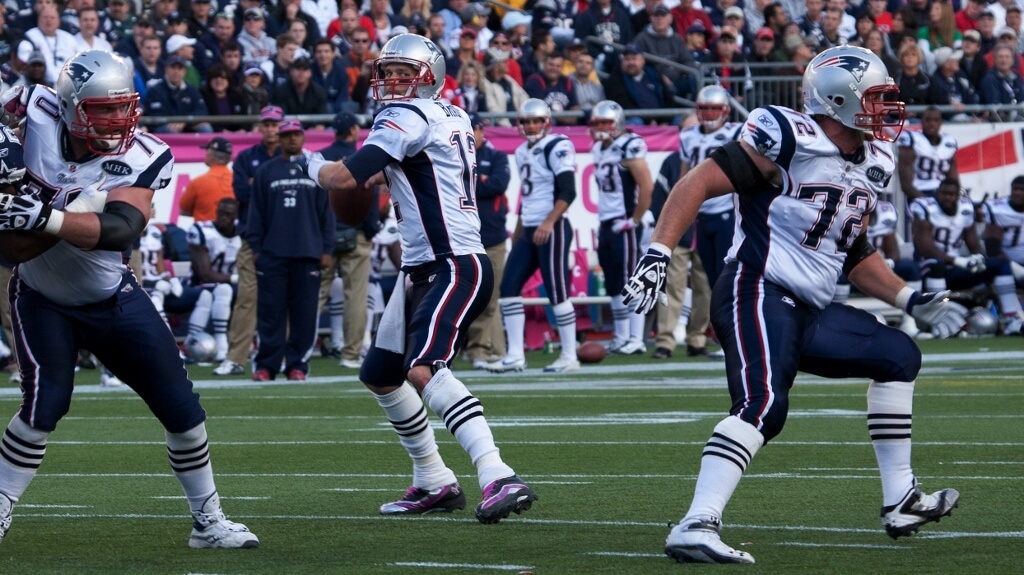How did the Super Bowl's media partners handle huge spikes in interest and activity around Sunday's big game?
Super Bowl: Avoiding A First Down Off The Grid Iron
How did the Super Bowl's media partners handle huge spikes in interest and activity around Sunday's big game?

Speed and performance proved to be deciding factors in the outcome of Super Bowl 51. The game went to overtime and crucially there was a direct correlation between the speed of passes, individual player movements and conversions.
In many ways the statistics on the field echo the challenges e-tailers and ecommerce firms face as they prepare for major sporting occasions. The speed and performance of their websites and apps has a direct correlation to user experience and ultimately conversions. So what lessons can e-tailers and online firms draw from the Super Bowl?
As sporting events go, the Super Bowl is up there in terms of the audience figures that it attracts. American football is a global concern these days and it has gathered a particularly strong following in the UK.
The appeal of the game has seen the National Football League (NFL) extend 3 regular season games to London since 2007, with sell out crowds at Wembley.
For UK businesses, the growing popularity of American football is an opportunity not to be overlooked however the chances of a first down can take on a whole new meaning for the unprepared or uninitiated.
Betting, retail and media firms can benefit from the growing interest but it’s not without risks, as a first down is no longer restricted to the gridiron. There is a very real risk that their website or app crashes under the strain of the live broadcast or a spike in traffic – which could have major implications on revenue and reputation.
From First Down to Touch Down
The Super Bowl takes the interest in American football to new heights, as the number of UK audiences watching the game live through the early hours has grown over the years. While UK broadcasters and retailers will have slightly different objectives and interests, there is one thing both have in common that has the potential to make or break their goals.
The performance of their digital platforms is instrumental to their success and poor performance can severely impact revenues as well as reputations. The road to success is in many ways akin to an American football game, combining strategy and a game plan to deliver results.
Followers of American football will be familiar with the basic rules of the game. Essentially the team with the ball has four plays (a down) to move the football 10 yards from the line of scrimmage, whilst retaining possession. The ultimate goal is to get the football into the opposing team’s end-zone for a Touch down.
Bringing Strategy and Game Plan Together
For media, retail and betting firms there is but one simple objective – don’t drop the ball (excuse the pun). By that, e-tailers and broadcasters alike have to ensure their sites can handle whatever is thrown at them, both the volume of traffic as well as any spikes in traffic.

Super Bowl LI sponsors like Budweiser, Audi and, erm, Febreeze paid millions of dollars for their slots
But it’s not purely about traffic volumes - user experience is equally important as consumer expectations dictate and drive the sites they visit as well, the amount of time they spend on them and ultimately whether browsing converts to purchasing.
To ensure they are ready, broadcasters and retailers would have adopted a performance optimisation strategy early on. At its heart are 3 aspects - Measure, Test and Optimise. The combination of these elements creates a robust yet dynamic performance environment that ensures that e-tailers and broadcasters have the flexibility and scope to accommodate high volumes of traffic or unexpected spikes.
Putting your Game Face on…
After all the strategy and planning, the real measure is when you take the field and run the plays. Like their American football counterparts, web performance teams, ecommerce managers and marketing groups have to put their game face on and stick to the plan or adjust it in light of evolving events.
That is where real-time information, data analytics and continuous testing bears dividends.
There is a strong correlation between page load time and human behaviour. If users cannot engage quickly with sites and apps, the end user experience suffers and they will take their business elsewhere. While the focus on the back end (server) is on stability and scalability, 80 to 90 per cent of page load time is spent on the front end (browser).
By measuring from the user’s browser or app, e-tailers and media companies can quantify the correlation between page load time and user engagement, and identify where to optimise front-end performance for more positive outcomes.
Maximising web performance requires end-to-end optimisation – bandwidth, load balancing, application code, databases, user connectivity, configuration settings, shared environments, and third-party services. This is enhanced when performance teams can draw on real-time information to correlate the impact of performance metrics to the bottom line.
Not only does this bring disparate teams together, it forges a holistic approach to website performance testing.
Similarly, the New England Patriots drew on real-time information and used those insights to overcame a massive points deficit to win the game by optimising their game plan and using speed and performance to drive the necessary conversions. Touchdown!
Vincent DeGennaro is general manager EMEA at SOASTA.
Thanks for signing up to Minutehack alerts.
Brilliant editorials heading your way soon.
Okay, Thanks!


